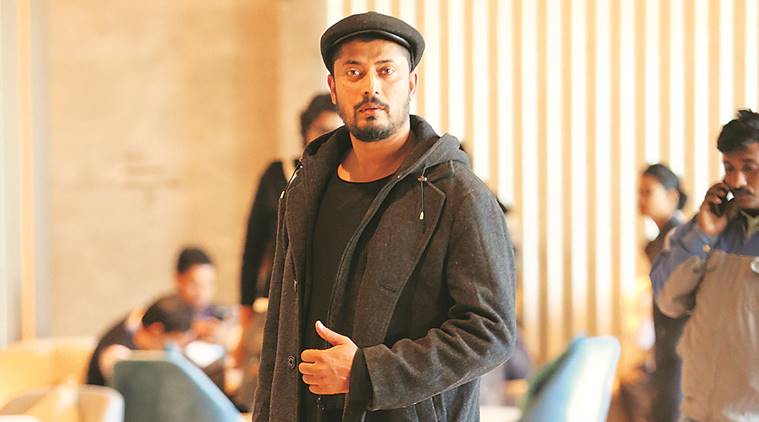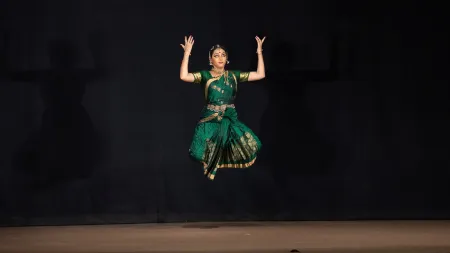- India
- International
Artist Wajid Khan turns nails, bullets and automotive parts into art that tells tales
Last month, Namaste Orchha festival exhibited his celestial 40-feet hydra-like kinetic installation, made with 300 steel bowls which locked in and out itself with every gush of wind.
 Artist Wajid Khan
Artist Wajid Khan
Dil-e-nadan tujhe hua kya hai/ Aakhir iss marz (sic dard) ki dawa kya hai? (Foolish heart, what ails you?/What is the remedy of this ailment?) Tall, broad-shouldered, the statuesque sculptor Wajid Khan turns to poet Mirza Ghalib to describe the scourge of COVID-19. As migrant labourers walked home hungry in the last few days, Khan was distributing food to students stuck in Indore. But, he says, in an Instagram video, the police stopped that.
“Where are the ‘superpowers’ today? We were committing crimes against Syria, Libya, Africa, the poor, labourers, refugees. We’ve forgotten all that. We’re now realising the meaning of life and death. We need to act unitedly, with the government, to fight this problem,” says Khan, 39, with a slight stammer.
With more time on his hand now, besides going live on Instagram, he reminisces about his last work — a spider-like kinetic installation — and awaits to resume work on a Swami Vivekananda statue in Uttar Pradesh, a portrait for Queen Elizabeth, and commissions for Dubai Expo 2020 and 2022 FIFA World Cup. So far, with studios in Indore and Dubai, Khan has made several iron-nail portraits of personalities like Mother Teresa, Jesus Christ, Dhirubhai Ambani, Salman Khan, shadow art of Sardar Vallabhbhai Patel, and nail art installed at Delhi’s Rashtrapati Bhavan.
 Khan’s installation in Orchha
Khan’s installation in Orchha
Last month, Namaste Orchha festival exhibited his celestial 40-feet hydra-like kinetic installation, made with 300 steel bowls which locked in and out itself with every gush of wind. Knowing zilch about physics, his art is all jugaad (improvisation). The work “denotes the balance in society with all kinds of divide: jaat (caste), rich-poor, Hindu-Muslim. Take a katori (bowl) out, it’ll stop moving. India is like that,” says Khan, who was once served a fatwa for speaking against a maulana. “I’m against fundamentalism of any kind. No religion teaches you to hate,” he adds.
The boy from Songari village, in MP’s Mandsaur district, wanted to do something “toofani (outlandish)”. He assisted his maternal uncle in making robots using nails and auto parts, with a machine crusher and thresher as equipment. With over 200 inventions, like the tiniest electric iron, smallest ship that could sail, he found mention in world records, including Guinness World Records (for a peace symbol made of 14,992 nails in 2017).

After he flunked in Class V, he took Rs 1,300 from his mother and took the train to Ahmedabad. He slept on footpaths, sold clothes, made and sold small machines for mills near Dilwara temple and played rugby in Mumbai. Life took a turn in 2002, when he got a patent for nail art through National Innovation Foundation-India.
At the Urdu literature festival Jashn-e-Rekhta in December 2019, Delhi saw a 12×8 feet metal Ghalib come to life, crafted with wine glasses, bottles and jugs. “When dedicating a work to someone, make it with the things/ideas associated with him,” he says. The same belief guided his work that made him famous overnight but took five years to complete — a pointillist life-size image of Mahatma Gandhi. It was made with 1.25 lakh nails and “fake” bullets — which signify hinsa (violence) while Gandhi stood for ahimsa (non-violence) — hammered into an
acrylic sheet.
The philanthropist, who turns a philosopher in his TED Talks, runs campaigns like Save Birds — installing on footpaths and tree trunks, small birds crafted out of steel spoons and forks, with water cans for birds to drink from.
Apr 20: Latest News
- 01
- 02
- 03
- 04
- 05


































